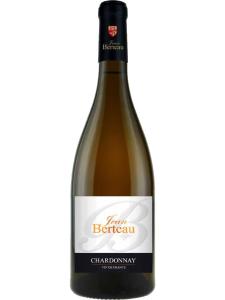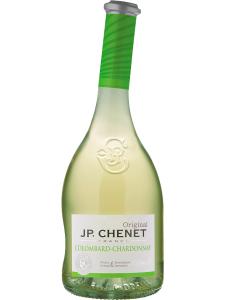Vin de France (formerly Vin de Table) is the most basic quality tier for wines from France. The typical Vin de France wine is an uncomplicated everyday wine – most likely a blend, but possibly a varietal based on a well-known grape variety like Cabernet Sauvignon, Merlot, Chardonnay or Sauvignon Blanc.
Vin de France wines are those which do not meet the criteria stipulated by Appellation d'Origine Contrôlée (AOC) or Vin de Pays (VDP) appellation laws (see French Wine Label Information). This might be because the vineyards are outside the delimited production areas or because the grape varieties or vinification techniques used do not conform to the rules of the local appellations.
Although there are a handful of notable exceptions to the rule, most Vin de France wines are produced from high-yielding vines in the south of France (particularly Languedoc-Roussillon), most often from traditional, widely planted varieties such as Carignan or Merlot. They are light-bodied, fruit-driven wines intended for early consumption. A large percentage of Vin de France is 'bag-in-box' or 'box wine' because the economies of scale of cheaper packaging are an attractive option for both producers and consumers.
There are, however, some Vin de France wines of exceptional interest and quality. These are 'downgraded' to Vin de France either because they're produced outside officially delimited AOC and VDP zones, or because they are made with unsanctioned grape varieties or blends. The most obvious example of this is Chateau Palmer's "Historical XIXth Century Blend", which combines Cabernet Sauvignon and Merlot from Margaux with Syrah from the northern Rhone Valley. The practice of adding between 10% and 20% rich Rhone Syrah to a Bordeaux wine was common in the 19th century, as much Bordeaux in those days was light-bodied and acidic. The resulting wine was said to be hermitagé, (after Hermitage). For a top-flight Bordeaux chateau to produce a Vin de Table or Vin de France is quite exceptional; it has attracted a great deal of attention, not to mention a price thirty times higher than the average Vin de France. Another notable Vin de France wine is 'Zind', a Chardonnay-dominant wine from respected Alsace producer Zind-Humbrecht. The use of Chardonnay in still wines is not permitted under the Alsace AOC laws, and the region has no VDP/IGP titles, leaving Vin de France as the only category available for this high-quality wine.
The most controversial example is arguably Badon Thunevin's 'Vin Interdit'. A wine which otherwise would have been classified as Saint-Emilion Grand Cru was relegated to Vin de Table because the vines were covered with plastic sheeting during a period of heavy rain (an act forbidden under Saint-Emilion appellation law).
Under the old Vin de Table category, wines could be made from grapes grown anywhere in the EU, and their labels did not specify a region of origin. Neither could they show a vintage date, meaning that the wines could be a combination of multiple countries and multiple vintages. Those produced exclusively from French grapes were labeled as Vin de Table Français.
With its loose production constraints and low-quality wines, the Vin de Table title commanded little respect with either producers or consumers. In the 1990s and 2000s, the strong uptake of the Vin de Pays category and the extensive arrachage (uprooting) of lower-quality varieties and vineyards, progressively less Vin de Table was being produced each year. In the face of ever-growing competition from New World wine regions and emerging European regions, French wine producers were forced to raise quality levels above VDT level. The solution was the new Vin de France category, under which wines come exclusively from French grapes, and for which vintage and region statements are optional rather than prohibited.



